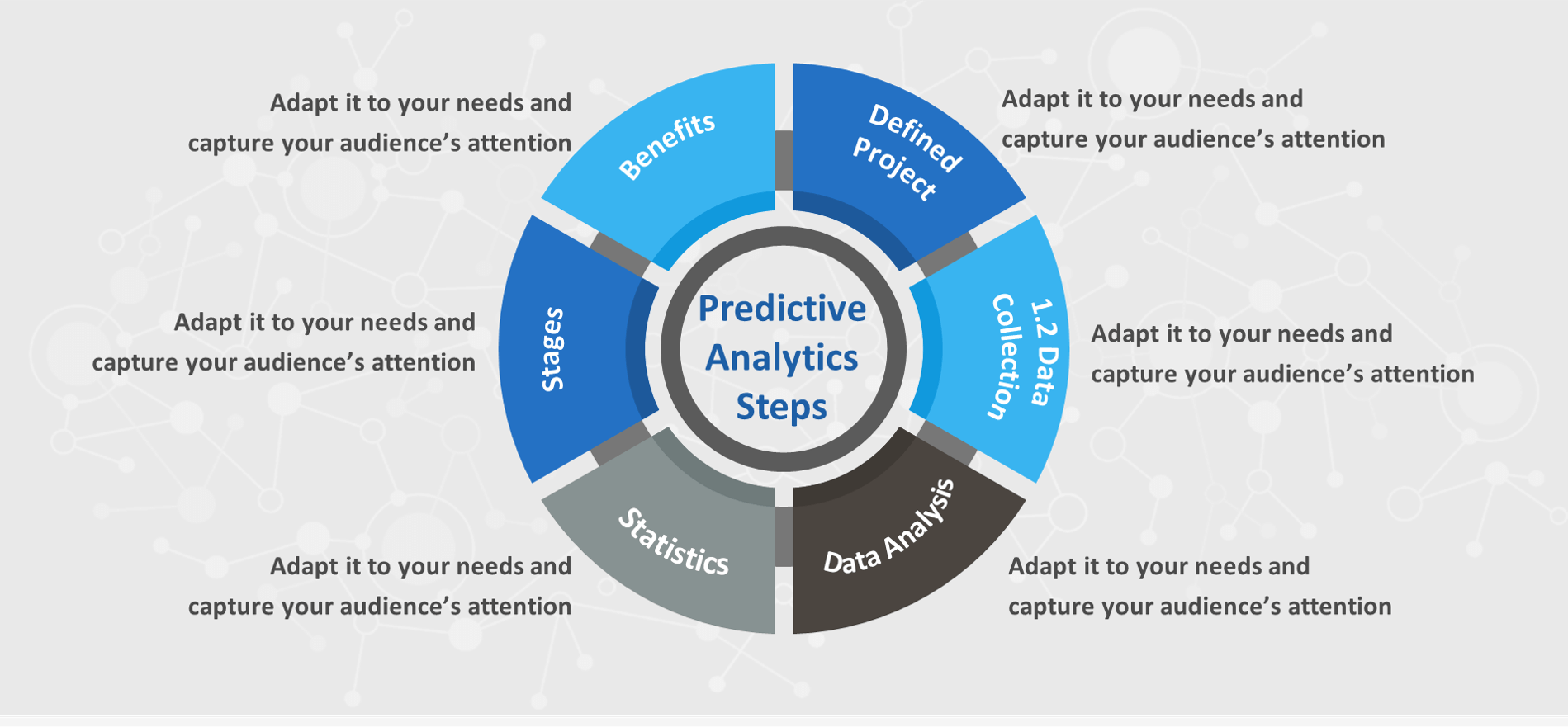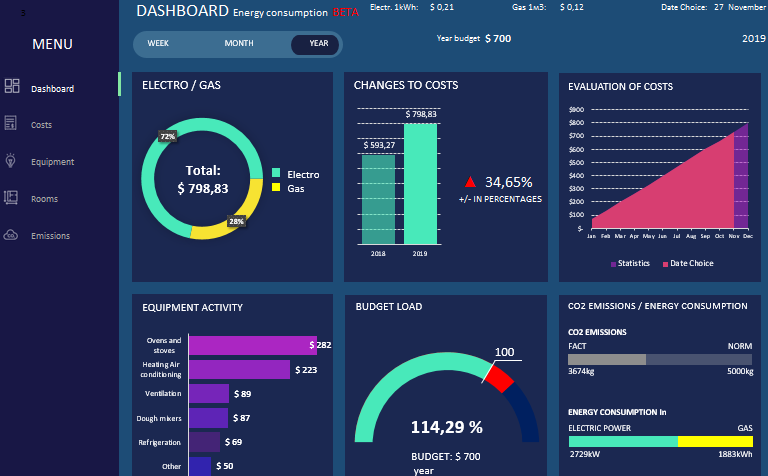As a business owner, you need to make decisions that have a large impact on the success of your business. You need to make decisions ranging from the small, such as what color your company logo should be, to the larger, such as whether to expand your business. No matter what your decision, it should be based on facts, not emotions.
Decision-making is a crucial aspect of running a business. Whenever you decide what to do next, a chain of events is triggered, which may eventually lead to the outcome you desire. These events constitute the Decision-Making Process using predictive analytics consulting. Read more.
What Is Decision Making Process?
The decision-making process is a term used to describe how a company gets to a point where it can make the best decision for its company. This process is a way of thinking, a way of seeing the world, and a method of arriving at what you believe are the best possible decisions.
From the day a company is founded, it is believed that each executive should also be a manager in the right sense. It is believed that the executives should be able to take the right action with the help of the appropriate decision-making process. And the best decision-making process is one that is not only efficient but also cost-effective.
The decision-making process can be broken down into three steps:
1. Analysis of the current situation.
2. Presentation of the data to the manager, who can take the data and make a decision.
3. Applying the final decision.
Most of us, or at least most of the people we know, love to take suggestions from others, especially in matters of the heart or the pocket. Because of this, it is vital that we make decisions with the best information possible to us. The more information a decision-maker has, the better the decision, as the more information they have available to them, the more informed their decision-making.
This is maybe the reason why there are several versions of those “decision-making processes”. Different situations need different processes to arrive at a more favorable decision, with the demand and even the technology that we are in, businesses taking the chance to be more efficient and cost-effective in every decision that they take. And that is where business intelligence comes in.
Decision Making Process using Business Intelligence (BI) System

In order to make the best decisions, companies need to use tools to decipher their data and better understand their customers. Business Intelligence (BI) is a set of tools used by companies to analyze data using data analytics tools, gain valuable insights, and make better and more informed decisions using Business Intelligence reports.
Since its early days, business intelligence has been a tool for decision-making. It’s a way to ensure that managers and executives make better decisions so that businesses can run more effectively. These decisions can range from basic operations like deciding how much to produce to broader strategic considerations like deciding what products to sell. However, BI tools vary considerably in how they are designed, how they interact with other applications, and how they are used. Ultimately, BI is about having access to the right information at the right time.
What are the effective steps in the decision-making process that uses BI?
In business, it’s important to make quick and accurate decisions. But how do you make a decision when you have a lot of data to consider? And how do you make a decision when your data isn’t always accurate? When you make a decision using business intelligence tools, it’s critical to consider the steps that must happen to make the decision. These are:
Gathering information
If you’re like most of us, you’re using spreadsheets and dashboards to visualize and present data on the Web. But some businesses are turning to dashboards to make smart decisions that improve operations, enhance employee satisfaction, process more data, and have greater visibility into the bottom line.
Design and analyze
Routinely encountering data requires a person to make decisions on how to process the data. It can be viewed as a few steps involved in this process. First, it involves the analysis of data, followed by the identification of the most appropriate decision-making model. The implementation comes after the analysis of data. The data analysis process is then repeated, and the model is altered based on the latest information or discoveries, if necessary.

Select and implement using ad hoc query, what-if, and forecasting.
The importance of data in business is beyond dispute. But, the problem is that most companies are not making the most of the information available to them. What they have is not necessarily the right data and is not being put to its best use. Ad hoc queries, what-if scenarios, and forecasting are particularly effective tools for uncovering hidden information. It can influence risk and make decisions. Ad-hoc query, What-If, and Forecasting are three terms used in business intelligence to help make decisions.
Do evaluations using the vital tools.
Effective decision-making is critical to business success. The good news is that business intelligence tools can help you make better decisions. Using dashboards and reports can help you identify key performance indicators, make comparisons between data sets. Also, identify opportunities to improve your business. If you have any experience managing a business, you know that these vital tools are a necessity, providing you with the information you need to make business decisions. These tools can be used for assessing your performance, motivating staff, and improving the customer experience.
Separate the components that are not related.
At one point in time, every decision we make appears to have little connection to anything else. This is because we are able to separate decisions into distinctly different components, such as the sales forecast, the profit, the hiring policy, and so on. The trick is to recognize that these components are inseparable. Moreover, a decision made without the sales forecast is like an engine without the air. You get nowhere. A decision made without a profit is like an engine without fuel. You get nowhere. A decision made without a hiring policy is like an engine without the air. You get nowhere.
Increase the coherence.

Business intelligence is a technology that extracts and analyzes historical data to help organizations make better decisions. It is a key asset for businesses that use it to gain value from all their data and to make better decisions on how to spend their resources.
There is a trend among different organizations in today’s world to adopt the use of Business Intelligence. The use of business intelligence in these organizations helps in making decisions faster and more effectively. With the help of business intelligence, organizations can keep track of their processes. Moreover, the performance of their business, and the consumption of resources and get insights into the organization’s current situation. Business intelligence solutions help in making more effective decisions.
What Are The Important Things To Consider When Using BI?
The most popular business intelligence (BI) tools include Microsoft Power BI, Tableau, Qlik, and MicroStrategy. However, other tools are also available, including Microsoft Excel, Cognos Business Intelligence, SA. Each of these BI systems is designed to provide business users with the tools they need to make decisions that lead to improved business performance and profitability.
However, considering this statistic, it is a bit surprising to discover that only one-third of users feel that their decision-making has improved since using BI tools. Business intelligence is defined as an information technology (IT) process that enhances business performance through the use of data-driven decision-making. It is a way of helping a company make better decisions and increases the success of the business. When used correctly, it can also help make better use of limited IT resources for productivity and can help reduce costs.
Fill In The Form For – FREE 30 Mins Consulting For Power BI










